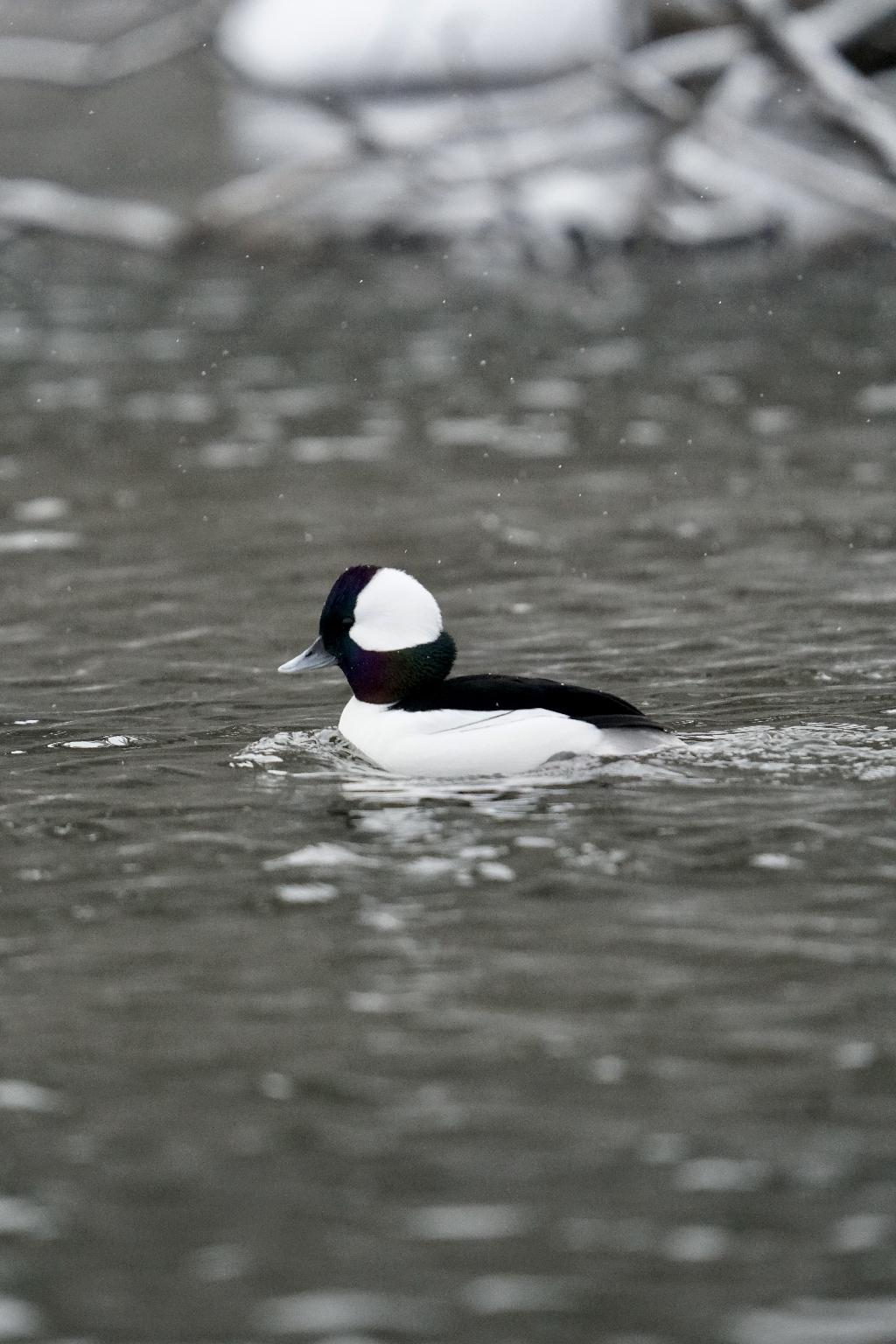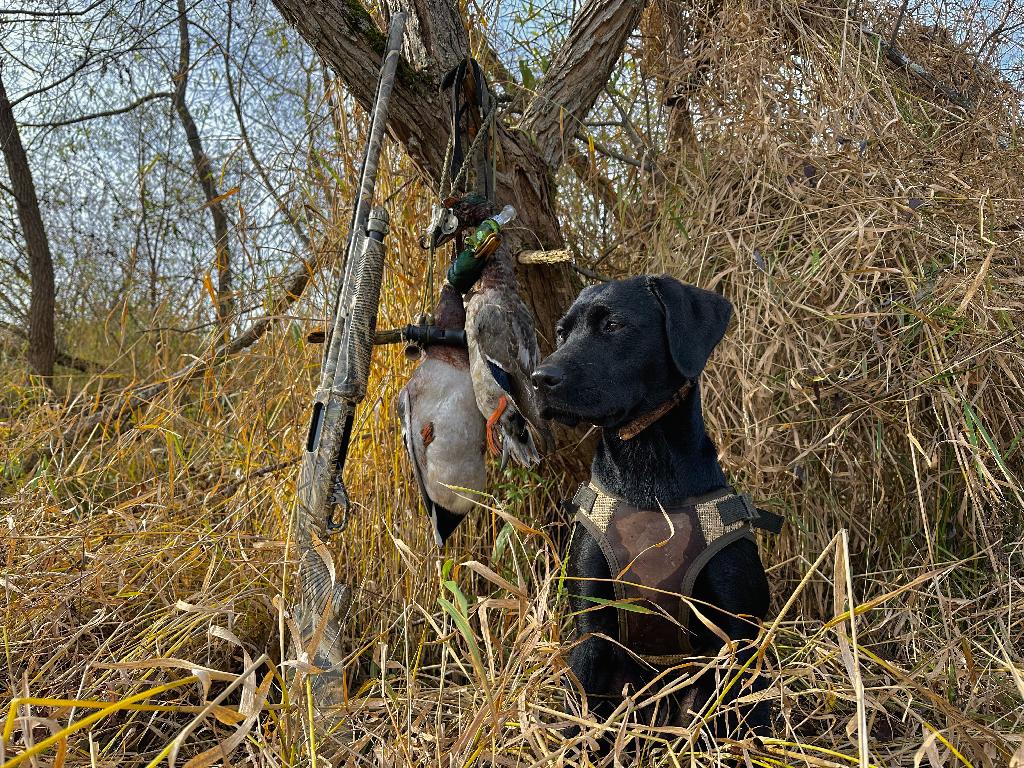In Praise of Butterballs
Dad stood and stretched his arms, just as he was about to call the hunt, he froze, and slowly sank into the dense blind cover while reaching for his gun. All around us, we could hear the sound of wings shredding the air to ribbons as a flock of ducks descended towards the decoys. I shifted my gaze upwards and caught sight of the white underbellies of a dozen buffleheads, banking into the edge of the blocks. Just as they set their wings and lowered their pinkish, oarlike feet to land, we rose and fired, knocking a trio of starkly colored drakes to the water below.

The dog splashed in after them, she didn’t care that they were butterballs; she was just excited to perform her duty after several hours of staring at empty skies. When she returned with the first bird, Dad took it from her and passed it to me. It was the first drake bufflehead that I had ever taken. I shifted its bill from side to side in the glaring sun, trying to decide if there was more purple or green in the feathers on its head. Though I had harvested a bufflehead before, it had been a hen, and holding that starkly colored drake in my hands helped me appreciate their beauty. That hen was the first duck that I had ever taken on a youth hunt with my father. Before that unlucky buffle had come along, all of the ducks that had found their way into our decoys escaped with a lesson in overcommitment. When that small bird fell on the second shot… I clutched that mottled brown duck proudly, little did I know, but that young bird would catapult me into an addiction that occupies most of my thoughts in my waking hours.

For those who don’t know, buffleheads are small sea ducks, though they seem to prefer shallow inland lakes for foraging, rather than thrashing seas as their classification may suggest. The drakes are mostly white, with a patch of dark head feathers that contain stunning hues of purple and green. Hens are quite drab compared to their male counterparts, being mostly dark brown with little white on them at all. Buffleheads are a rather widespread duck throughout North America. They are found in all 4 of the major flyways, and according to conservation organizations, are doing quite well as a species. This goes hand in hand with their relaxed bag limits; Michigan allows for a hunter to take home his full bag limit of six ducks a day in all butterballs if he so chooses, and approximately 73k buffleheads were harvested by Michigan hunters alone in recent seasons.
They are obligate cavity nesters, one of only three diving duck species to nest this way in North America (the others being the common goldeneye and hooded merganser). Because of this, buffleheads benefit from common conservation practices such as the installation of nest boxes in preferred habitat, and they tend to nest in abandoned flicker holes as well. Here in Northern Michigan, they are a common sight in late fall. They whisk their way south on strong north winds to winter in areas where the chill of winter is not so fierce, with the Great Lakes states being hotspots for them. However, their wintering ground extends from Northern Michigan down to much of Central America.

If you were to ask a handful of duck hunters what their favorite duck is, not one of them would likely mention, or even consider, the butterball. Most of them will probably pick the mallard or wood duck (both are high on my list, too) and quickly discount the butterball, who is so easily misjudged. Truthfully, it is easy to understand why many hunters discount the bufflehead of being a bird worthy of harvest; they are rather small, and do not make the best table fare due to their preferred diet of invertebrates, crustaceans, and fish. Despite this, it is hard to find a more beautiful duck than the bufflehead. Aside from this, they are extremely fun to shoot.

In my experience, buffleheads are rather willing to decoy and zoom into the spread in closely packed bunches, offering a mixture of shooting opportunities and angles that will keep you on your toes and wondering how on earth you missed that single that was only fifteen yards out. I have found that they are susceptible to traditional diver setups such as the “J” or the “horseshoe”, but generally they will decoy into smaller spreads as well with little hesitation, making them rather easy to hunt as well.
While buffleheads may be one of the most unsung of ducks, next time you are sitting in a duck blind with cold hands and a retriever who has been confined to their stand, consider shooting the single drake butterball that zooms in, give the dog some exercise, and enjoy the beauty of the bufflehead.
Related Aritlces
Retriever Safety
With a heave, I pulled my foot free of the thick muck, I wondered if another half mile of this was worth the trouble. The edge of this particular beaver pond seemed solid enough, but I had slogged far enough to find out that wasn’t the case. The previous day, a group of mallards were feeding on the far end of the hellish mire, and the decision was made to return with a couple dozen decoys. Behind me, my black lab was having a harder time than I was, the mud was clutching at her belly and legs, and the sharp ends of gnawed-off sticks protruded through the loamy sludge. Up ahead the mallards quacked and whistled tauntingly. Despite the temptation, I decided to turn back. To me, no duck is worth potentially injuring my dog.



















